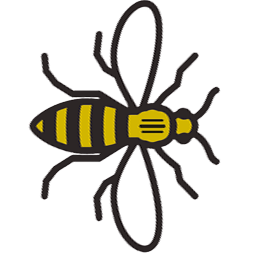Ever since TQUK EPA started offering End-Point Assessment for the Teaching Assistant Apprenticeship Standard, we’ve gotten a lot of questions from employers about how they can help their apprentices prepare for it.
It’s great to see employers so invested in their apprentices, so we wanted to do a bit more to help them out! If you have an apprentice about to take their End-Point Assessment, there’s a lot you can do to make sure they succeed.
Your Teaching Assistant
Even before your Teaching Assistant apprentice undertakes their End-Point Assessment, they already bring a ton of value to the classroom. Teaching Assistant apprentices can work in primary, special and secondary education, across all age ranges. Their roles can include providing for special educational needs and emotional vulnerabilities. They are vital assets to have to make sure classes function for all students involved.
Throughout their apprenticeship they’ll attain vital knowledge, skills and behaviours needed to excel in their job, including understanding how pupils learn and develop, getting familiar with curriculums and knowing how to deliver them, developing strategies for learning and support, understanding how to promote professional standards and learning how to maintain professional relationships across your organisation. Throughout their programme they’ll complete their training, ace their work and pass Gateway.
Now, it’s time for the final test: the End-Point Assessment.
The End-Point Assessment for Teaching Assistant apprentices is made up of the following assessment activities:
- Practical Observation with Question and Answers
- Professional Discussion supported by Portfolio of Evidence
Practical Observation with Question and Answers

What is a Practical Observation?
In a Practical Observation, the End-Point Assessor will observe the apprentice undertaking a defined set of tasks related to their job role. The apprentice will be observed undertaking these activities while the End-Point Assessor notes and records performance and achievement against defined criteria outlined in the Apprenticeship Standard. Generally, Practical Observations assess skills and behaviours, but a well-designed Observation will assess knowledge, skills AND behaviours. An Observation also pairs well with a Professional Discussion to bring out the underpinning knowledge, so the End-Point Assessor can get a broad view of the apprentice’s competence by both observing them undertake tasks and asking them about these tasks (ie ‘I just saw you do it – now tell me why you did it’).
What Happens in the Assessment?
All details of the event (venue, date, time) will be planned by the employer, the apprentice and the End-Point Assessor before the assessment takes place (ideally during the Gateway stage).
The Practical Observation for the Teaching Assistant End-Point Assessment will take place on location and will be conducted by the End-Point Assessor. The Observation will last approximately 2 hours. The Question and Answer session will last for approximately 15 minutes after the end of the Observation.
The Observation will:
- Reflect the apprentice’s genuine and typical working conditions;
- Allow the apprentice to demonstrate all of the Apprenticeship Standard criteria;
- Take a synoptic approach to assessing the knowledge, skills and behaviours (ie will assess how knowledge, skills and behaviours are connected and overlap);
- Be carried out on a one-to-one basis (only one apprentice is allowed to be observed at a time).
During the Observation, the apprentice will demonstrate the ability to, among other things:
- Deliver/lead small group teaching within clearly defined/planned parameters using initiative, sensitivity and understanding;
- Implement current statutory guidance including ‘Keeping Children Safe in Education’ Part 1, safeguarding policies and the Prevent Strategy;
- Use specific feedback to help pupils make progress;
- Use relevant technology competently and effectively to improve learning;
- Recognise the difference between pastoral and academic issues and model good behaviour for learning;
- Contribute to a range of assessment processes and use information effectively – for example, written records;
- Work closely with teachers to ensure their own contribution aligns with teaching.
Once the Observation is complete, the End-Point Assessor will conduct a Question and Answer session with the apprentice. This session will allow the End-Point Assessor to further question the apprentice in areas that they have partially demonstrated during the Observation in order to provide additional assurance.
Questions that the End-Point Assessor asks the apprentice will be written by the End-Point Assessment Organisation (EPAO). All EPAOs will keep a bank of test questions ready for the Question and Answer session, which is reviewed regularly to ensure unpredictability.
Top Tips: How to Help your Apprentice Prepare for their Practical Observation
- Do a mock assessment: Conducting a mock observation with your apprentice will help prepare them for the assessment format and give them a sense of what kind of tasks they will perform. Get in touch with your EPAO for guidance on how to conduct a mock assessment.
- Make sure the apprentice knows the time and date: The End-Point Assessment can be a very busy time. It’s easy for apprentices to fudge their schedules. Double-check that they know where to go and what to do.
- Review specific topics and terminology: Check out the Apprenticeship Standard to ensure that your apprentice is meeting all the knowledge, skills and behaviours criteria that will be assessed during the Observation and the Question and Answer session.
- Prepare for the Question and Answer session: It can be easy to assume that the Observation will only cover skills and behaviours, but the Question and Answer session will test the apprentice on various knowledge standards. Encourage your apprentice to review all the necessary criteria to be sure everything is up to snuff.
- Prepare the premises so that the apprentice has everything they need to succeed: Ensure all the necessary equipment and materials are at hand and that there won’t be any unnecessary or avoidable disruptions during the assessment.
- Speak with the Training Provider and/or On-Programme Assessor: You may be able to identify areas where the apprentice needs improvement.
Professional Discussion Supported by Portfolio of Evidence

What is a Professional Discussion?
A Professional Discussion is a structured discussion between the apprentice and the End-Point Assessor whereby the End-Point Assessor will ask the apprentice several pre-prepared, open-ended questions and the apprentice will provide responses. It is normally used in conjunction with an Observation or Project Assessment. It will allow the End-Point Assessor to probe deeper into the apprentice’s knowledge and to confirm any questions they had about their performance.
What is a Portfolio?
A Portfolio is a collection of evidence of work, progress and activity which the apprentice compiles over the course of their programme that may include testimonials, journal entries, projects and more. It will give the End-Point Assessor a detailed, tangible view of the apprentice’s abilities and accomplishments.
What Happens in the Assessment?
The Professional Discussion for the Teaching Assistant End-Point Assessment will last for approximately 90 minutes. It will be a structured discussion between the apprentice and the End-Point Assessor following the Practical Observation and will establish the apprentice’s understanding and application of the required knowledge, skills and behaviours. It will take place in a quiet room away from distractions.
The Portfolio of Evidence will serve as the basis for the Professional Discussion. The evidence within the Portfolio can be used by the apprentice to evidence and support their responses to the questions posed by the End-Point Assessor.
The purpose of the Professional Discussion is to:
- Make judgements about the apprentice’s quality of work;
- Explore aspects of the work, including how it was carried out, in more detail;
- Discuss how the apprentice would behave in specific situations, with the End-Point Assessor asking scenario based questions;
- Ensure there are no gaps within the evidence ;
- Provide a basis for the End-Point Assessor to make a decision about the final grading.
The Portfolio is completed during the apprentice’s on-programme learning and is meant to support the Professional Discussion. It will contain a minimum of 10 pieces of evidence and a maximum of 15 which may include:
- Feedback from a performance management review system;
- Evidence of pupil progression;
- Work produced by the apprentice (eg interventions);
- Evidence from Practical Observations and general observations obtained over time;
- Observations carried out by competent Teaching Assistants and HLTAs, Line Managers, Class Teachers and Mentors;
- Assessor reviews;
- Naturally occurring pieces of evidence (eg feedback from visitors/parents);
- Details of any training and courses attended;
- Notes from professional discussions.
Top Tips: How to Help Your Apprentice Prepare for their Professional Discussion
- Make sure your apprentice hands their Portfolio in on time: The Portfolio of Evidence should be given to the End-Point Assessor two weeks before Professional Discussion takes place. Be sure to remind your apprentice of the assigned date.
- Do a mock assessment: Lots of apprentices can get very intimidated by a Professional Discussion. A mock assessment will help prepare them for the format and the types of questions they will be asked. Contact your EPAO on how to conduct a suitable mock assessment.
- Support your apprentice by helping them compile their Portfolio: The evidence your apprentice submits needs to be of sufficient quality, and the final Portfolio should not contain any gaps, particularly with regards to Safeguarding and Health and Safety.
- Help your apprentice relax: It won’t do your apprentice any good to head into their assessment all stressed out. Provide them with some tips to get into the right headspace for their End-Point Assessment.
Grading for the Teaching Assistant End-Point Assessment

The final grade for the Teaching Assistant End-Point Assessment will be awarded based on the table below:
| Practical Observation with Q&As | Professional Discussion with Portfolio of Evidence | EPA Grade |
| Fail | Fail | Fail |
| Pass | Fail | Fail |
| Fail | Pass | Fail |
| Distinction | Fail | Fail |
| Fail | Distinction | Fail |
| Pass | Pass | Pass |
| Distinction | Pass | Pass |
| Pass | Distinction | Pass |
| Distinction | Distinction | Distinction |
~
We hope this blog gave you a better picture of what’s involved in the Teaching Assistant End-Point Assessment. To keep up to date with all the latest End-Point Assessment news from TQUK, return to our blog or follow us on Twitter, Facebook, Instagram and LinkedIn.
See you around The Hive!













